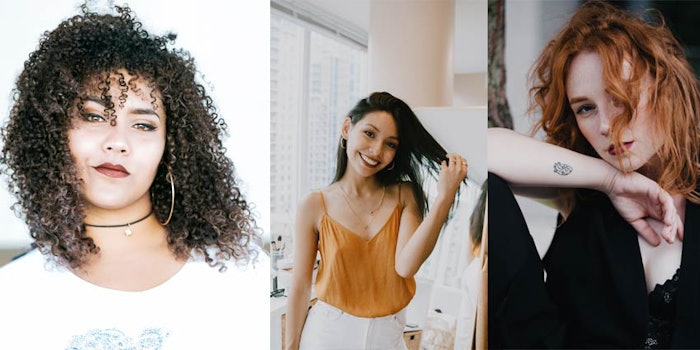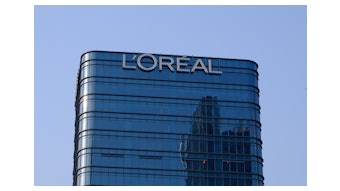
MANA's "Current Prestige Haircare Consumer" report details the behaviors and demands of prestige hair care shoppers, including packaging, ingredients, claims, leading retailers and brands, and more. Here, Global Cosmetic Industry details highlights of the report and offers insights from Maria Stadler, vice president of product development and marketing, MANA.
First look: Arbonne's Sustainable Hair Care Range
Methodology & Demographics
The study was commissioned through Crosswalk's opt-in software, which monitors the digital behaviors of more than 100 million worldwide consumers. This particular report was derived from insights gathered from 240,000 current prestige hair care consumers ranging from late 30s to early 40s (average: 38). Half identified as parents.
Most consumers fell into an annual salary range of $75,000-99,000 per year, with an average among prestige hair care shoppers of $82,000 per year. MANA notes that there was a sizable cohort earning more than $100,000 per year.
These shoppers use Instagram most, followed by Facebook and YouTube.
Purchasing & Retail Preferences
The surveyed shoppers spend $20-48 on hair care products, paying the least for dry shampoo and hairspray, and the most for hair treatments, like masks and serums.
Per MANA, 53% of consumers prefer to shop in store, while 47% prefer shop online. And 50% note they prefer to see products in person before purchasing. These insights point to the popularity of retailers featuring also buy online, pick up in store (BOPIS) programs.
Top retailers include Sephora, Ulta Beauty, Neiman Marcus and Nordstrom, though consumers do shop and big box stores such as Target and Walmart, both of which have greatly expanded their beauty offerings.
The report anticipates greater use of salon services for professional treatments that DIY/at-home offerings cannot replicate. This, of course, is dictated by the waxing and waning of infection rates.
Claims, Functions & Packaging
Top product/label claims and functions among surveyed consumers were: vegan, clean/natural, silicone-free, sulfate-free, hair type indication, damage repair, hydration, color-safe, removal of dirt and oil, volume, frizz control, and thinning hair.
Trending ingredients include natural oils, hydrolyzed proteins, shea butter, aloe vera and other natural ingredients.
Top packaging preferences include squeeze bottles, aerosol cans, spray bottles, pumps, recyclable/reusable and eco-friendly. In terms of design, consumers expect the brand name as most prominent, followed by the product name and functions.
Trending Brands
Trending brands include Olaplex, Moroccanoil and Bumble & bumble.
Expert Insights
Global Cosmetic Industry spoke with Stadler to dive deeper into the report's findings. Her insights are presented below.
Pricing & Shopping
In MANA’s recent study of 24,000-plus current prestige hair care consumers, the observed consumers revealed that they spend between $20 to $48 on hair care products, paying the least for dry shampoo and hairspray, and the most for hair treatments, like masks and serums; 53% of prestige hair care consumers still prefer to shop in store; 43% prefer shop online.
Purchasing Decision Factors
Before prestige hair care consumers purchase a hair care product, they take three factors into consideration: ingredients, specific functions and packaging.
For ingredients, consumers consider whether the product is vegan and contains clean and/or natural ingredients. Beyond this, they also look for hair care products that are silicone- and sulfate-free. Their high regard for natural oils, shea butter and aloe vera proves that these consumers assign importance to the inclusion of natural and clean ingredients in their hair care products.
This consumer group also values key ingredients that offer various perceived benefits, including promoting hair growth, maintaining shine and nourishing hair. They are well educated on ingredients that purport to maintain healthy and hydrated hair (hydrolyzed proteins, glycerin), protect hair during heat styling (dimethicone, shea butter), aid in the prevention of hair loss (aloe vera, biotin), and treat bleached, damaged hair (bis-aminopropyl diglycol dimaleate). They prefer fresh and clean scents, followed by fruity and floral scents for their hair care products.
As far specific product functions, these consumers prefer products that cater to their individual hair type. They research and purchase products that deliver long term solutions to help repair damage and hydrate hair. They also look for products that provide instantaneous results, like removing dirt and oil, enhancing volume, and controlling frizz. “Safe for color treated hair” is a must for this group.
For packaging, they prefer squeeze bottles, aerosol cans and spray bottles. They also look for packaging that is recyclable, reusable and eco-friendly. They also need products offered in a variety of sizes. They choose to purchase products in larger sizes, specifically 7.6-10 oz., followed by smaller sizes, specifically 2.1 - 5 oz.
Post-pandemic Behaviors
Sustainable beauty, clean ingredients and a general desire for simplistic beauty routines are expected to continue into the post-COVID world. During the pandemic, consumers practiced at-home self-care and improvised DIY beauty activities, as they couldn’t visit their favorite salons or beauty retailers.
They sought ways to get professional results at home, purchasing products they normally would not have in an attempt to achieve similar results. As the world starts to open up, it’s predicted that there will be a great surge of current prestige hair care consumers visiting salons to receive treatments they are tired of doing themselves or simply cannot achieve at home.
Consumers require the option to shop online, in store or through a hybrid of the two, specifically with BOPIS options. As consumers have grown accustomed to its convenience, BOPIS is guaranteed to remain a purchasing factor for consumers moving forward post pandemic.










